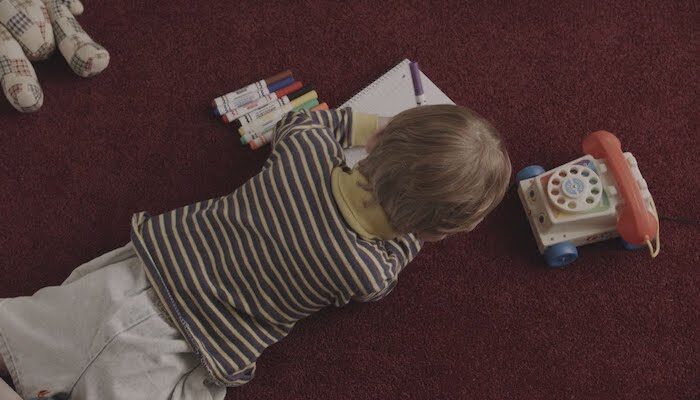Ricky D’Ambrose’s The Cathedral tells an autobiographical tale of childhood as a collection of memory fragments
(This review is part of our coverage of the 2022 Sundance Festival)
If we can even trust our own memories (and science says we can’t), it’s far more likely that what we retain from our childhoods is random and unremarkable, an episode of an old TV show we once watched rather than a trip to Disney World. Much like we remember slights more than compliments, so too do negative events remain fresh in our minds far more than the good times. Ricky D’Ambrose’s The Cathedral is essentially a brain dump of these bits and pieces of his life, committed to film. It’s not a “slice of life” movie, exactly, more like a collage that would benefit from some filling in of a few blank spaces.
Actually, to call it a “brain dump” isn’t entirely fair. D’Ambrose clearly has an eye for framing and capturing the period of his life depicted here. Every shot, even of such mundane objects as a tray of hospital food, looks like it was taken from a photograph. They feel deliberate in their insignificance. The Cathedral is fascinating to look at, but oddly chilly and detached.
Standing in as a barely fictionalized version of D’Ambrose is Jesse (played at various ages by Robert Levey II and William Bednar-Carter), born on Long Island in 1987. He’s the only child of Richard (Brian d’Arcy James) and Lydia (Monica Barbaro), whose time together as a happy couple appears to be woefully brief. It’s not surprising: their marriage is a union of two families full of assholes, who constantly harp on each other about money (or lack thereof), and cruelly shuffle around their clinically depressed matriarch from home to home, refusing to make amends with each other even after she passes away.
Richard and Lydia eventually divorce, and marry other people at least as ill-suited for them as they were for each other. While Lydia doesn’t seem to change much at all, Richard only gets more bitter and misanthropic as time goes on, telling Jesse, all of maybe 10 at the time, “You can’t trust anyone.” Jesse doesn’t have much to say about any of this. He’s a quiet observer, taking in what he sees and evidently filing it away in his brain (or rather D’Ambrose’s brain) forever.

We don’t, however, know how Jesse feels. Richard and his ex-father-in-law get into a fight at Jesse’s high school graduation dinner, which would be a mortifying experience for any teenager, but we never see his reaction to it. If he’s upset about his parents’ divorce, he never expresses it. D’Ambrose seems far more interested in recreating memory fragments from his life and presenting them as static art, rather than exploring any of the emotions behind them.
The viewer is told things by the omniscient narrator, a woman who is never identified, rather than shown. While this approach makes sense for events that aren’t particularly relevant to the story, like Jesse’s confirmation, it’s strange when applied to more important things, like the “growing schism” between Jesse and his stepfather, a character who gets exactly one (1) line of dialogue. How this schism is formed, or how it impacted the family, is never explained. We’re also told that Jesse’s younger half-brother is born with disabilities, which caused a great deal of strain on his mother, but that too is merely mentioned in passing, and not depicted in any meaningful way. Far more time is spent on Richard’s constant money problems, and it’s puzzling that that clearly made far more of an impression on Jesse than having a medically disabled brother.
The Cathedral (the title of which is never really explained) is, for better or worse, like no other coming of age movie you’ll ever see. Few of the memory fragments D’Ambrose depicts involve other children, nor do we see the benchmark moments of other movies in the same genre, such as puberty, first love, etc. Unlike Richard Linklater’s Boyhood, of which comparisons to this are inevitable, there are virtually no pop culture references. Only occasional clips of the news reporting on Desert Storm, the first World Trade Center attack, and Hurricane Katrina give it a sense of time and place. But, again, whatever Jesse (and D’Ambrose) thinks about those events goes unsaid.
As someone who grew up in the 80s, I appreciate the touches of realism, like Richard’s bland, pastel living room, which looks like it came directly out of a Polaroid circa 1988. I appreciate D’Ambrose’s fascination with the ordinary, like when he holds a shot on a pair of shoes, or a relative’s bejeweled hands. The Cathedral is an interesting concept, and a fresh departure from the usual Wonder Years narrative. But its insistence on depicting moments without emotion feels, in the end, a little empty.